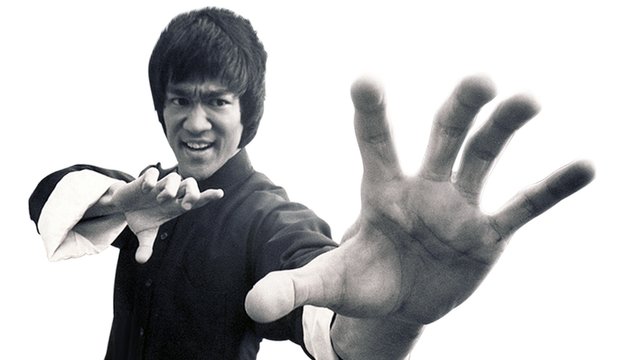Jeet Kune Do

Almost 50 years have passed since Bruce Lee's death, but jeet kune do, the legacy that the little dragon left us, is still alive and in continuous evolution.
The origins of jeet kune do are in 1965 in a small gym in Oakland (California), where Lee taught wing chun to people of all sexes and races (unusual for the Chinese people who, according to the ideas of the time, were strictly conservative and contrary to disclose their traditions). He began to notice the many differences between Asians and Westerners, especially from a physical point of view, understanding that the traditional martial arts were not suitable for every person both for physical performance and for the different fighting methods. Bruce Lee was also what we today would call a hothead, who did not disdain to fight for real (the reason why he had to leave Hong Kong) and he was certainly not the type to run away in front of an aggression. When he arrived in America, Lee found himself facing a different reality from the one he was used to: he had to face fights with people much taller and bigger than him and moreover the wing chun system was mainly based on a short distance, leaving out all the other options. Lee was convinced that a good martial artist had to be complete; so he began to be interested in different martial arts, reading many books and studying different fighting methods and focusing his interests towards boxing and fencing. Initially he called the method he was elaborating Jun Fan Gung Fu. In 1970 Bruce Lee, as a result of an accident, was bedridden: he began a method of philosophical and methodological elaboration and this continuous process of evolution brought him to a complete detachment from traditional methods, creating a new system based on a completely innovative concept ...... Jeet Kune Do was born.
When Bruce died, his two closest students, Dan Inosanto and Ted Wong, found the heritage of their master (which was in continuous evolution) in their hands. Wong limited himself to divulge Lee's teachings without a continuous research thus giving origin to Jun Fan JKD. Inosanto, instead, continued his own research, continuing the evolution of his master's teachings and concepts based on the concepts of fluidity and adaptability that Bruce Lee loved to consider.
His research continued (and still today has not found an end) transmitting his new and old studies to his own students, basing himself on the fundamental concepts of "non-method" as a method and "non limit" as a limit coined by Bruce Lee.
Inosanto, revised the JKD adapting it to the modern street fighting and self-defense, using and readapted the techniques of Western and Filipino boxing, Muay Thai and Wing Chun for what concerns the bare hands combat; in the armed combat instead we find mainly the Filipino kali; in ground combat we have techniques derived from BJJ (Brazilian Ju Jitsu) without forgetting the Kino mutai (which develops the concept of anti-fighting) that affects the softest tissues of the human body such as throat, eyes, etc. ... using holds, bites, and scratches.
This combat system differs from all ring sports and traditional martial arts, because its playing field is not a ring or a dojo, but the street where there are no referees or rules, where the aggressor can use weapons of any kind.
"Empty your cup so that it may be filled, to participate in totality make the void within yourself. The substantial absence of a stereotyped technique makes one free and total."
(Bruce Lee from "the tao of kung fu")